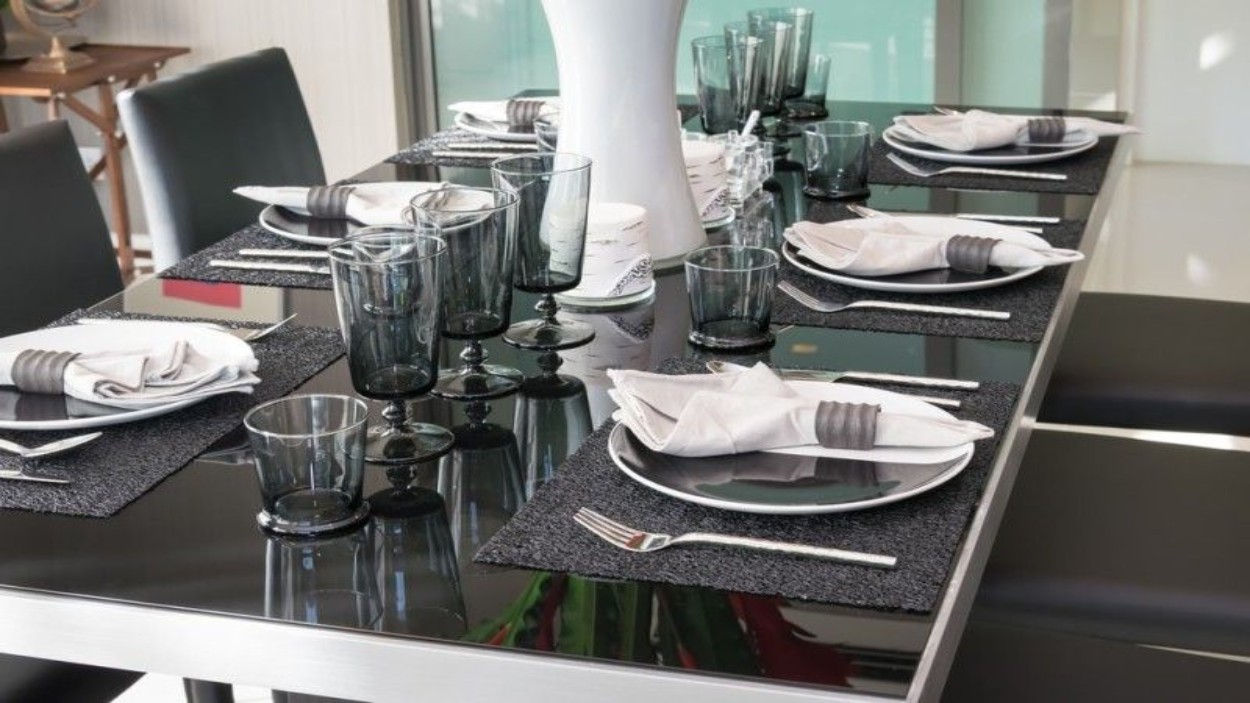Jul

Dining Etiquette
Does a question constantly arise on …Which fork do I use first? When can I start eating? “Why are table etiquette and table manners so important?” “Why do we need to always keep in mind certain things even while dining? Simply put, understanding proper table etiquette and practicing good table manners are in part what makes us civil human beings. Eating is not only a necessity; it is a ritual of sharing our well-being and extending respect and courtesy towards our fellow men. With our family, friends and business associates dining is a major event that demonstrates our civility and our education.
Understanding etiquette plays an important role in making a favourable impression. The point is not to give you a lot of stuffy rules to memorize, but to make you and those around you feel comfortable in social settings. Don’t worry, it’s pretty easy to get up to speed! Let’s quickly get started.
The Table Setting: Deciding which knife, fork, or spoon to use is made easier by the outside-in rule – use utensils on the outside first and working your way inward. So, if you are served a salad first, use the fork set to the far left of your plate.
Holding your Silverware: There are only TWO correct ways to hold, and TWO ways to use your silverware. Using your knife and fork, practice the two different methods described below and determine which one is most comfortable. For the choice of dining method, if you are a slow eater, we recommend the European method to speed up the process. If you are a fast eater, we recommend the American method to slow down the process.
ü Scalpel Method: Hold the utensil like you would a surgeon’s scalpel. The tines of the utensil should face downward. Your pointer finger will press on the back of the neck and the end of the handle should be touching the centre of your palm. Your remaining fingers grasp the utensil to hold it in place.
ü Pencil Method: Hold the utensil like you would a pencil. It should be resting between the tips of your pointer finger and middle finger with your thumb on top to hold it in place. The end of the utensil should be resting on the webbing of your hand
Rules for Napkins: Placing the napkin in your lap is the first thing you do when seated at a table. It is respectful to wait for the host or hostess to place their napkin on their lap first. Never crumple your napkin into a ball or wear your napkin as a bib. Whenever you leave the table in a formal setting or restaurant, you may place your napkin on your chair. It is important to remember not to sit on your napkin when you return to the table. Sometimes at nice restaurants the server will pick up your napkin while you are away and give it back to you when you return.
Breaking Bread: When eating bread, muffins or rolls, break off and eat one small piece at a time. Breaking bread stems from many different historical and religious origins. Breaking bread was referenced as far back as the Talmud. During Medieval times, all the scraps from court were collected at the end of the meal and given to the poor.
Salt & Pepper: Salt and pepper should never be separated from one another. Salt and pepper are like penguins—black and white and together for life. Even if an individual only asks for just one, always give them both. Salt and pepper shakers should be held at the base, making sure your fingers are not anywhere near the tops. When passing the salt and pepper, set them down between you and the person to your right.
Resting Positions:
Continental /European Style
To show your server that you are NOT finished eating in the continental style of dining, utensils should be perpendicular to one another with each handle on opposite sides of the plate and the blade of the knife facing towards you. Make sure the tines of the fork are facing DOWN towards the plate in the Continental Style.
American Style
To show your server that you are NOT finished eating in the American style of dining, utensils should be slightly perpendicular to one another with each handle on the same side of the plate. The knife is placed on the edge of the plate with the blade of the knife facing towards you— the same place you rest your knife when dining. Make sure the tines of the fork are facing UP in the American Style.
Finished Eating for both styles of dining:
When finished eating, utensils should be placed parallel to each other at 4:25 as if your plate were a clock. By placing your utensils in this manner, you are not only helping the server, you are helping yourself. The server can now easily place his or her thumb over the top of the utensils—securing them in place. Make sure the blade of your knife is facing toward you and the tines of the fork face UPWARD.
Some important tips:
- A guest should follow the hosts’ lead to begin serving and passing the food.
- Be sure everyone is served before beginning to eat.
- Take a little of everything out of respect to the cook.
- Don’t take more than your share
At TOPNOTCH YOU we work together to make things a lot more easier and guide you on your dining skills. TOPNOTCH YOU brings before to you techniques to help you create a mark even when you dine with the TOPNOTCH YOU DINING ETIQUETTE PROGRAMME. Our innovative skill training courses emphasise the minutest of the details that make you stand Out of the Crowd.
Do get in touch with us at topnotchincofficial@gmail.com for more details. You can also follow our social media pages for regular updates:
- Facebook and LinkedIn – TOPNOTCH INC
- Instagram & Twitter- inc.topnotch
Dining Etiquettes in today’s time do carry importance in today’s lifestyle, and WE make it happen just seamlessly.
Jul

It’s Performance and It Matters!!!
If you were to ask a lay man what self-performance was like, the chances are tha...
Jul

DRESS UP AND SHINE!!!
The way you dress defines the person you are and what value you bring to the tab...